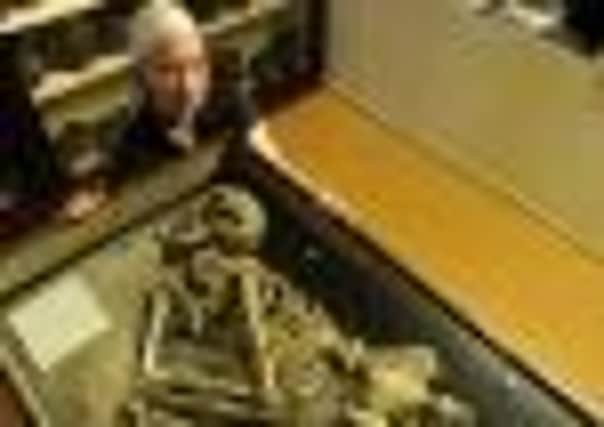Pioneer honoured for digging up secrets of the past


But in the century since his death he has been largely forgotten – even in his native Driffield.
Some long overdue recognition is being given to the Victorian barrow digger, who was a corn-chandler by trade, when a blue plaque is unveiled tomorrow on the building that once housed his purpose-built museum, the county’s first.
Advertisement
Hide AdAdvertisement
Hide Ad“It is time he took his place alongside the giants of 19th century archaeology, William Greenwell, from Durham and General Pitt Rivers, from the south of England,” said Stephen Harrison, the author of a soon-to-be-published book John Robert Mortimer; The Life of a 19th century East Yorkshire Archaeologist.
The businessman excavated more than 350 burial mounds dating back some 3,000 years, revealing thousands of human burials and cremations along with swords, daggers, axes, pots, necklaces and knives.
He left a legacy of 66,000 artefacts. Many can be seen today on display at the Hull and East Riding Museum in Hull.
Mr Harrison said: “He was a very careful and systematic excavator who recorded all his excavations in a great deal of detail.
Advertisement
Hide AdAdvertisement
Hide Ad“He was fighting against a background of destruction of sites caused by agricultural operations and the point is that if he hadn’t been around when he was doing what he was doing a vast amount of data would have been completely lost to us.
“We can go to the Hull and East Riding Museum and look at artefacts and know precisely what site they came from.”
Mr Mortimer, born in Fimber in 1825, whose interest in archaeology was sparked by a visit to the Great Exhibition and the British Museum in London aged 26, identified possible sites on his business trips round the county.
Farmers opposed him – one tried to deter Mr Mortimer from dumping a load of manure on one of the mounds, but he was helped by patronage from high places, the Sykes family at Sledmere.
Advertisement
Hide AdAdvertisement
Hide AdHe was so well-known that agricultural workers, who were offered rewards to pick up flint and stone tools from the fields, referred to them as “Mortimers”.
Some barrows took only a day or two to open, Duggleby Howe, the huge late Neolithic round barrow took two months, a hole 40ft square being excavated 20ft deep. One of his best-known finds is a complete Iron Age chariot at Danes Graves.
Sir Tatton Sykes often turned up on digs – at Garton Slack a small crowd turned out, including six doctors and a parson.
His business got into trouble in the agricultural depression of the 1880s and the man who had poured so much of his energy, money and time into his all-consuming interest, was declared bankrupt in 1887, forcing the sale of the museum and putting his superb collection at risk of being split up.
Advertisement
Hide AdAdvertisement
Hide AdThe sale including “cranea, longbones and accompanying relics from nearly 300 carefully opened British tumuli from over 200 Anglo-Saxon graves and three small Romano British graveyards together with swords, daggers, axes, knives and ornaments of bronze” failed to win interest from East Riding Council.
Several years had passed after his death in 1911 when Hull Corporation’s curator Thomas Sheppard finally negotiated a sale.
Despite his business difficulties, Mr Mortimer had carried on digging until he died. He said: “I may state that I have often found the pursuit of archaeology, and the diversion it affords, a delightful relaxations as well as a soothing anodyne for many of the cares and troubles which so frequently beset the paths of a business life.”
The plaque, at what is now the Masonic Hall, 25 Lockwood Street, Driffield, has been paid for by Driffield Town Council and Maurice Robson, of grain merchant’s James Mortimer Ltd.
Advertisement
Hide AdAdvertisement
Hide AdMr Robson said: “I’ve been here 51 years since starting as a junior and I just felt we were part of the Mortimer family and should do something in remembrance.”
A 4pm “meet the experts” event will compare modern techniques with Mortimer’s.
Next month an event will look at how Mr Mortimer’s legacy is coming into the 21st century, with archaeologists from all over the country. One speaker, Dave Evans, from Humber Archaeology Partnership, said: “It is hard to think of any person since who has worked in East Yorkshire since who has left behind such a legacy or made such an impact on the study of the subject.
“He built up what is undoubtedly the finest collection of pre-historic and Anglo Saxon remains in any provincial museum in the whole of the North of England.”